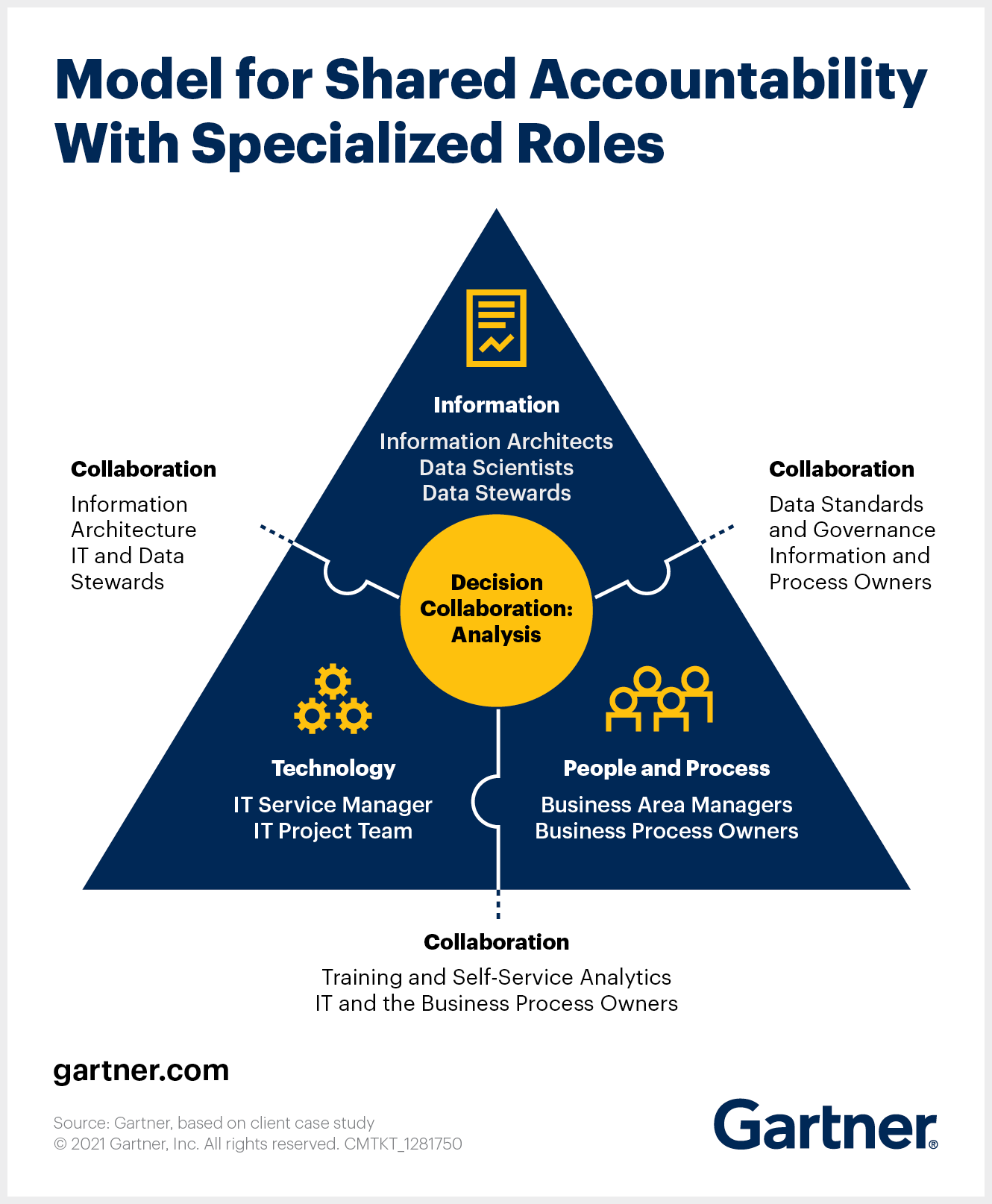Organizational demands for data and analytics (D&A) are growing, but many EA and TI leaders remain focused on data management programs that aren’t linked to business priorities. Instead, they should leverage their unique enterprise view to ensure that decision makers have the data they need to drive business outcomes.
Source: Enterprise Architecture’s Role in Building a Data-Driven Organization
Recent research from the Gartner Enterprise Architecture Research team says, “With 58% of CIOs increasing investment in business intelligence (BI) and D&A initiatives in 2021, there is an opportunity for EA leaders to provide an enterprise view against which hundreds of decisions comprising data initiatives are made.”
Download eBook: Original Postublications/what-effective-decision-making-looks-like" target="_blank" rel="noreferrer noopener">The Future of Decisions
How enterprise architecture leaders can leverage their unique view
EA leadership can identify and capture opportunities for high-demand, high-potential D&A capabilities if they leverage advantages that are naturally tied to their role. For example, EAs are uniquely positioned to:
- Identify enterprise data opportunities that people working within silos cannot.
- Understand end-to-end data flows to ensure optimization.
- Ensure that digital and business strategies are aligned to meet the data needs of the present and future.
These advantages can translate into practical applications that are critical to an organization’s D&A aspirations and can elevate its business value.
EA leaders can leverage their unique enterprise view to help build a more data-driven organization in four ways.
No. 1 Provide an enterprise view of the data landscape
Enterprise architecture looks across silos to address cross-functional data integration needs that an end-to-end journey map identifies. Poor data integration across systems can lead to data redundancy, and journey maps are more than handy to point out such issues. They can ensure that an organization sees the whole picture for data improvement opportunities.
For example, one university used journey maps to spot redundant information asked for throughout the enrollment process. The EA team was able to identify integration opportunities and optimize the process for students.
The EA team of a large retail chain in Europe collaborates with D&A staff to make data improvement opportunities tangible and quantifiable via data journey mapping, so that D&A initiatives can be scoped and targeted appropriately. They develop a cross-functional understanding of users' behavior and shopping patterns and add more value to their experience.
For instance, if users receive promotions via emails, then based on their purchase history, personalized promotions can be sent. Similarly, if users visit the company’s website and complete their order, then a customized shopping list can be automatically generated.
Read More: Enterprise Architecture Enables Digital Innovation
No. 2 Improve and scale the process of data analysis
Optimizing data management practices is not enough if data analysis and decision making are still cumbersome. The quality of data alone cannot increase revenue, reduce costs and improve agility.
EA leaders can improve the usage of data analytics tools and technologies to drive organizations toward informed business decisions.
They can address questions such as:
- Do those people have the time to conduct the analysis?
- How many steps does it take to make a data-driven decision?
- Does the tool provide the necessary functionalities for the best analysis?
- Is the tool user-friendly and does it encourage experimentation?
- Do relevant people have access to this data?
No. 3 Define roles and responsibilities for data improvements
Although the responsibilities of EA and D&A teams depend on the business model, it is essential to clearly define roles and responsibilities for everyone, and at the same time, focus on shared outcomes and success measures for better decision making. This can encourage collaboration and prevent overlapping responsibilities.
For example, apart from being responsible for information architecture, information architects can collaborate with IT delivery teams on areas like integration and system functionality. Similarly, the data science staff may own data analysis models, but it can collaborate with business leaders to identify the critical questions those models can answer. It can also team up with information architects to ensure that the right data is in the right place.

No. 4 Facilitate business-relevant analyses
Business problems require quantifiable, contextual and actionable insights that provide enough value to justify an investment. Besides reimagining D&A capabilities, there is a need to blend analytical expertise with business acumen to get the best of both worlds.
EA groups can partner with D&A teams and business leaders to identify critical questions that data can answer and discern the necessary and available information to answer the questions.
During these conversations, EA leaders can address both the standard data-quality issues (such as accuracy, timeliness, etc.) and the nonobvious ones as well. For example, data is of good quality, but it is not being used as well as it could be. This way, they can be key collaborators in continuously driving an organization toward data-driven decision making.
The post Enterprise Architecture’s Role in Building a Data-Driven Organization appeared first on Smarter With Gartner.

